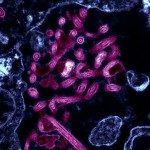Link to Pubmed [PMID] – 21612363
Biosecur Bioterror 2011 Jun;9(2):89-115
This article synthesizes and extends discussions held during an international meeting on “Surveillance for Decision Making: The Example of 2009 Pandemic Influenza A/H1N1,” held at the Center for Communicable Disease Dynamics (CCDD), Harvard School of Public Health, on June 14 and 15, 2010. The meeting involved local, national, and global health authorities and academics representing 7 countries on 4 continents. We define the needs for surveillance in terms of the key decisions that must be made in response to a pandemic: how large a response to mount and which control measures to implement, for whom, and when. In doing so, we specify the quantitative evidence required to make informed decisions. We then describe the sources of surveillance and other population-based data that can presently–or in the future–form the basis for such evidence, and the interpretive tools needed to process raw surveillance data. We describe other inputs to decision making besides epidemiologic and surveillance data, and we conclude with key lessons of the 2009 pandemic for designing and planning surveillance in the future.

